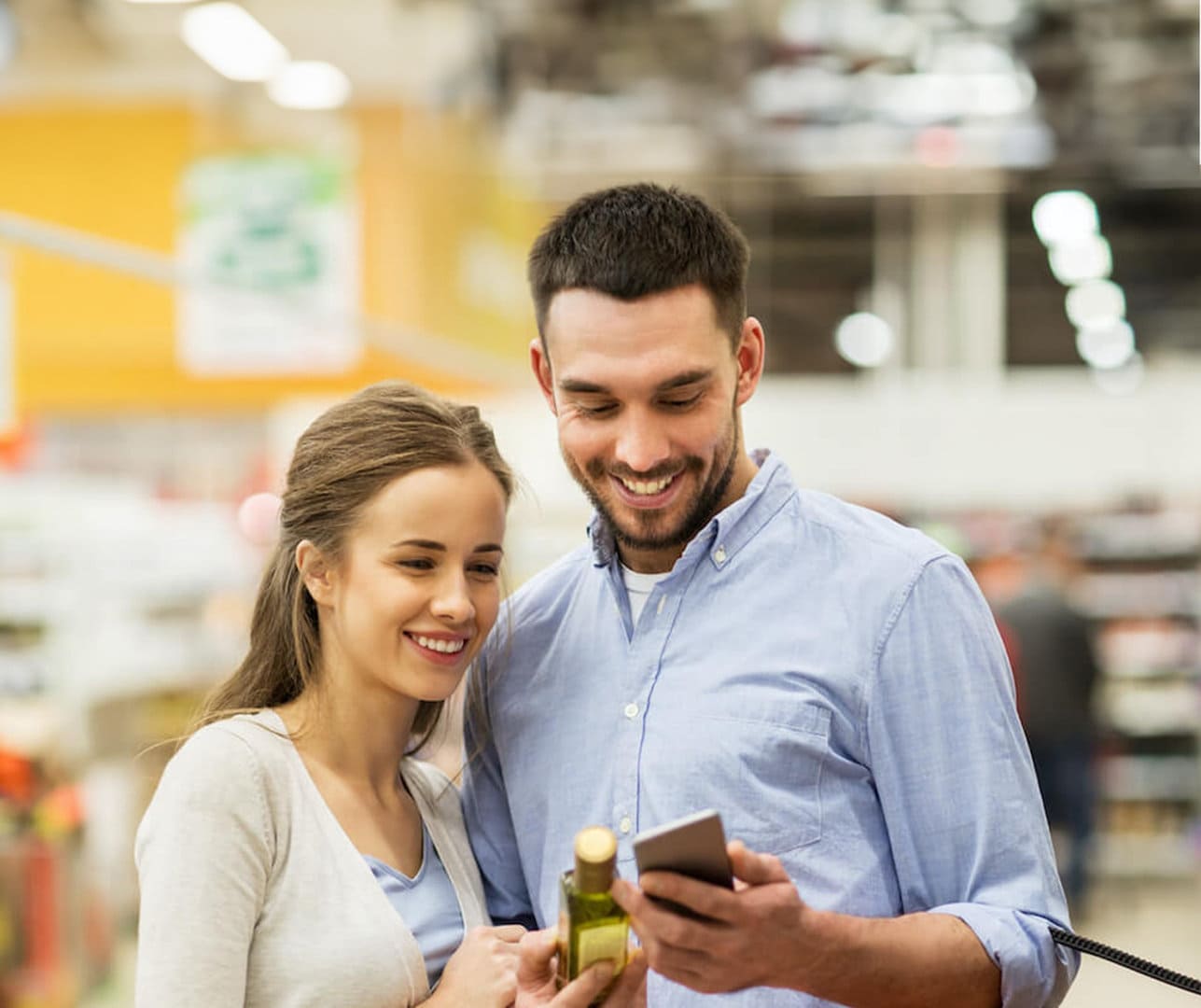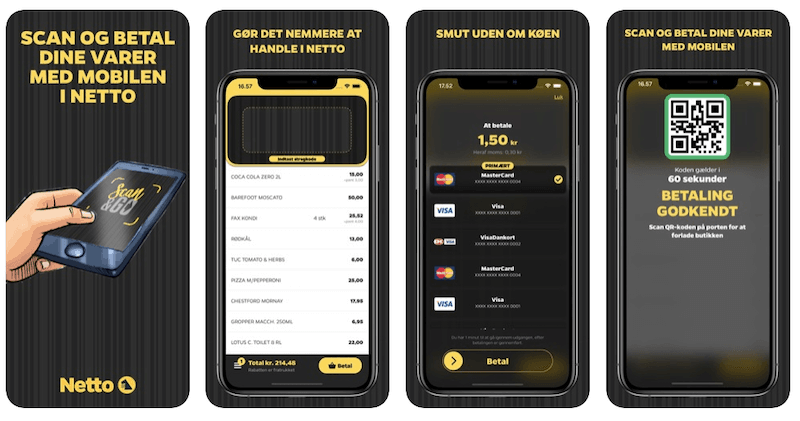Customers prefer the most convenient way to shop, and retailers that follow trends and introduce ways to provide it can increase their sales.
Launching physical retail concepts that incorporate technology is a great way to create more optimal customer experiences and increase sales. Self-checkout solutions are one of many great ways to achieve that. According to a survey, 66 percent of shoppers prefer self-service technology over interacting with the retail sales associate because it saves them a lot of time.
At Sprinting Retail, we have built and implemented ScanGo, a self-checkout solution that helped the biggest Danish grocery store chain improve their customer experience. In this article, we will share how you can decide if self-checkout is a good option for your store, what an optimal self-checkout experience entails, and options for implementing self-checkout technology.
Is self-checkout technology right for your stores?
Is self-checkout technology right for your stores?
Before you dive into implementing a self-checkout system, you need to weigh how much it would actually improve your customers’ shopping experience.
Although introducing self-checkout technology can be a great way to improve customer experience in brick-and-mortar stores, it is still not the right fit for each and every type of store.
First, consider what type of products you are selling. Self-checkout is a great solution for products that are easy to pick up, scan, and pack.
You also need to take into account whether your customers want to do their shopping as quickly as possible, or if they need some guidance from staff. If the products you are selling are high involvement products and require significant consideration, you should perhaps not opt for full self-service.
In some cases, having both self-service and the opportunity to be helped by staff creates the most optimal customer experience. In that case, testing the right combination of available staff and self-service is often a good idea.

What is the optimal self-checkout experience?
What is the optimal self-checkout experience?
There are many different types of self-checkout systems. From self-checkout counters, to Amazon Go-like shopping where the least amount of customer involvement is required, there are many ways to save your customers some queueing time. Which one works best for your store depends on the preference of your customers.
If you are running a retail chain selling goods that are easy to pick up and scan, e.g. supermarkets, department stores, pharmacies, convenience stores, etc., the solution we will describe below should be an optimal way to introduce a self-checkout system in your stores.
We will describe the self-checkout technology we designed and developed together with Netto, one of Europe’s largest grocery chains with 500+ stores in Denmark and 1000 stores across Europe. A similar solution might be a good fit for your stores as well.
Elements of an optimal retail self-checkout
Elements of an optimal retail self-checkout
Completely hands-off solutions such as Amazon Go are very advanced and fascinating. However, the cost of integrating all the cameras, sensors and security measures is still quite expensive, which is why it is not yet that relevant for most retailers.
A solution such as ScanGo that allows customers to scan goods with their own phone as they pick them up in the store is a powerful, effective and affordable choice for most retailers. The customers save a lot of time as they can pay with a swipe on their phone as they exit the store, with zero waiting time before they leave.
Here is what the shopping experience looks like from a customer’s perspective:
The advantages of this solution are customer convenience, saved cost of space, lower staff costs, and zero waiting time before the customer leaves the store compared to more traditional self-checkout counters.
How to optimise the user experience in ScanGo
How to optimise the user experience in ScanGo
Simple and intuitive UX without any excess options makes it easy for even less tech-savvy customers to use self-service at your stores. Here are some UX aspects that make this self-checkout solution convenient:
- As the customer scans items, they always have an overview of their current spend on their phone.
- The inconvenience of moving goods from the shopping cart or basket to bags is removed.
- Payment is made extremely simple and straightforward – customers need to set it up once, and they can pay with a simple swipe.
- Exiting the store by simply scanning a QR code saves valuable customer and staff time.

Considerations
Considerations
Here are some considerations retailers need to address with self-checkout solutions:
- Since self-checkout increases risks of theft, it is important to have good security and random checks, but also train staff to make sure that customers are made as comfortable with these checks as possible. If you are planning to introduce self-checkout, read our in-depth post on preventing self-checkout theft in retail.
- Some customers might not be as tech-savvy as others. This is why it is important to gradually educate customers about the benefits of using self-checkout, as well as make it easy for them to learn how to use the solutions.
- Some customers simply prefer interacting with people. It is good to have some easily approachable staff in your stores or integrate the option to ask staff for help in the self-checkout app. With the convenience of fewer queues, your staff will be able to address customer needs better.
Options for introducing a retail self-checkout system
Options for introducing a retail self-checkout system
If you have decided that you would like to introduce a self-checkout system in your stores, there are two ways to do that – by hiring an agile development company and building the solution, and by implementing a standard mobile self-checkout solution.
If you would like to build an innovative, new digital solution that would differentiate your company by adding options that are not available in standard solutions, agile development companies such as ours are here to work with you to achieve just that.
Self-checkout’s main benefit is a matter of convenience and saving time, so it can be more convenient for you to just implement a proven standard self-checkout solution, rather than invest into the development of a brand new one.
Once the self-checkout solution is developed, you don’t need to stop there. You can continue developing features that will tie your shopping experience into an omnichannel one, and grow sales even further.
Conclusion
Conclusion
With an increased customer expectation for retailers to make the shopping experience more convenient and personalised, self-checkout is becoming a standard, and mobile self-checkout a desirable upgrade.
If you are thinking about implementing self-checkout to complement your physical retail store shopping experience, make sure to consider what type would be the most optimal one for your business and your customers.
Want to learn more about implementing an advanced mobile scan & go solution in your retail business? Contact us to schedule a meeting or call +45 2888 8779.
An Optimal Grocery Chain Loyalty App Is Also a Shopping Tool
A loyalty app is an essential tool for any grocery chain looking to increase customer loyalty and retention. However, to reap the maximum benefits from a loyalty app, it should also be a shopping tool and generate new revenue streams!
How to Fuel Food Sales with a Powerful Digital Food Ordering System
To grow sales, food businesses need to help customers to order in the way that suits them. Learn what makes a powerful food ordering system.
Smart Theft Prevention for Mobile Self-checkout Systems
Mobile self-checkout systems are a great option for allowing shoppers to check out quickly and for reducing labour costs. However, empowering customers with mobile self-checkout introduces a new kind of risk for theft. Consequently, the retailer has to introduce a new form of theft prevention. Luckily, there are plenty of ways to mitigate this risk.


